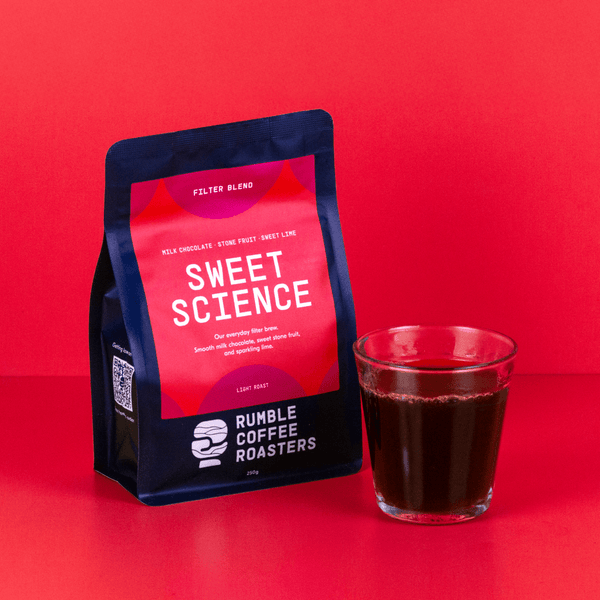
Filter Coffee Explained: What It Is, How It’s Brewed, and Why It Tastes So Good
Updated November 2025
At a Glance
-
What it is: Coffee brewed by pouring hot water through ground coffee and a paper or metal filter.
-
Why it matters: Filter coffee highlights the true flavour of freshly roasted coffee beans.
-
Perfect for: Coffee lovers who enjoy clean, balanced, and nuanced brewed coffee.
What Is Filter Coffee (or Filtered Coffee)?
Filter coffee — sometimes called filtered coffee — is a brewing method where hot water passes slowly through ground coffee and a filter, separating the liquid from the coffee grounds.
Unlike espresso, which uses pressure from a coffee machine, filter brewing relies on percolation brewing — gravity doing the work. This slower brewing process extracts flavour gently, resulting in a cleaner cup that highlights sweetness, clarity, and origin characteristics.
At Rumble Coffee Roasters, we adore filter coffee. The clarity of filter brewing reveals every note of our ethically sourced beans — we strive to give you consistently good filter coffee at home.
What Is a Filter Roast?
You’ll often see coffees described as filter roast or espresso roast.
A filter roast is a light roasted coffee, lighter than espresso to bring out sweetness, balance, and clarity when brewed using slower brewing methods like pour-over or drip coffee.
Because a filter roast coffee spends less time in the roaster, it keeps more of its natural acidity and fruit flavour — qualities that shine through when brewing coffee gently with clean water and a paper filter.
Espresso roasts, on the other hand, are roasted slightly darker to create more body and reduce acidity, helping the coffee cut through milk-based drinks.
In short:
-
Filter roast = for clarity, sweetness, and lightness.
-
Espresso roast = for intensity and milk balance.
Why Choose Filter Coffee
Filter coffee isn’t just a method — it’s a unique brewing process that brings out the purest expression of the bean. It’s smooth, calm, and rewarding.
Why people love brewed coffee:
-
Clean flavour: The filter papers remove oils and fine particles, giving a transparent cup.
-
Better clarity: The slow percolation brewing highlights each coffee’s origin.
-
Control: You can easily adjust grind size, water temperature, and brew ratio to your taste.
-
Less bitterness: Even extraction produces balanced, sweet flavour.
-
Scalable: Works for a single cup or large batch brew.
For many people, this is the “true” coffee experience — a simple, mindful way to start the day.
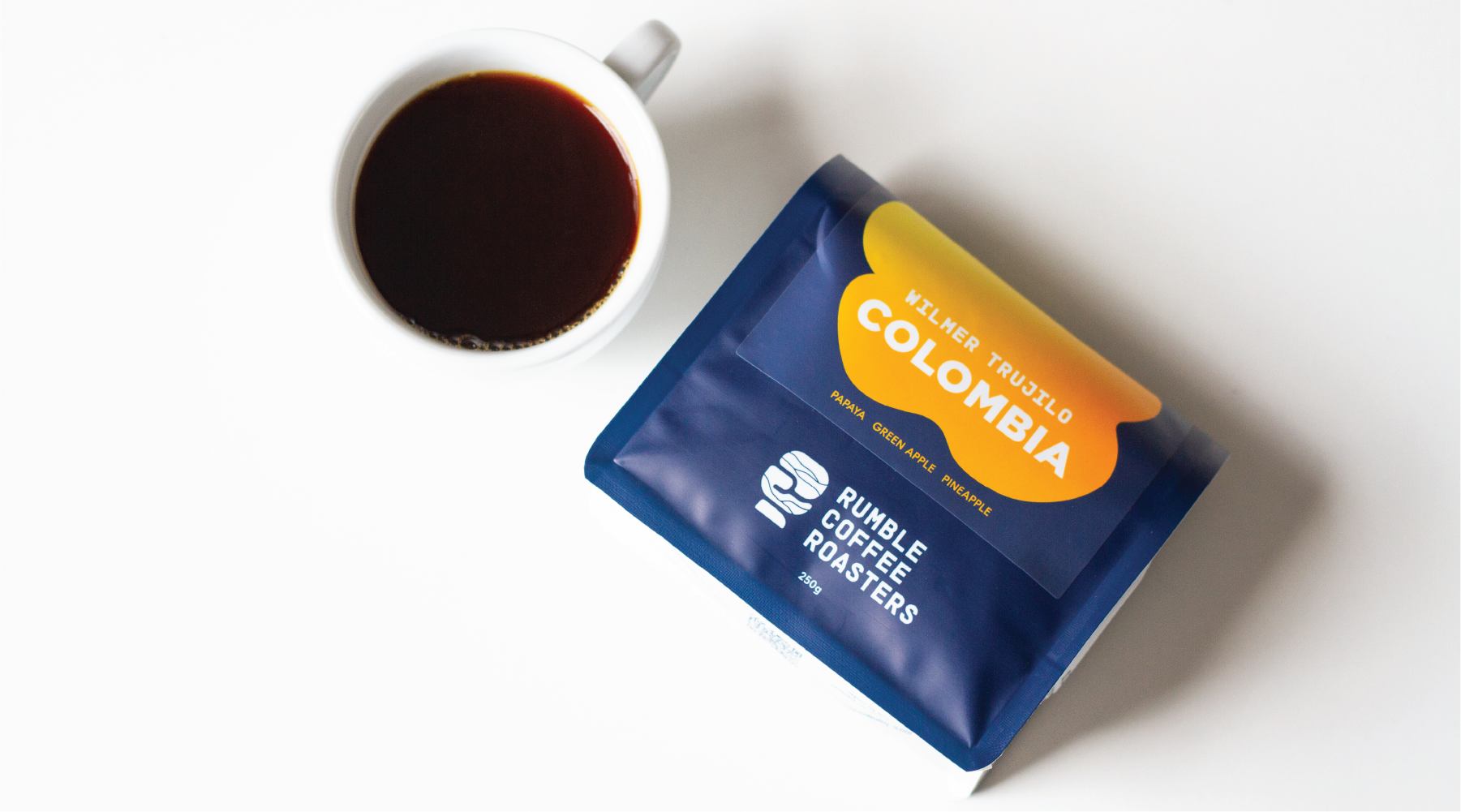
Popular Filter Brewing Methods
1. Pour Over (V60, Kalita, Chemex)
The pour-over is a classic brewing device where you pour hot water slowly over ground coffee in a cone dripper lined with a paper filter.
What you’ll taste: Clean, bright coffee with lively acidity and floral notes.
👉 Brew it with our Sweet Science Filter Blend for balance and clarity.
2. Batch Brewer / Drip Coffee Machine
Automatic drip coffee machines make it easy to brew multiple cups at once. Just add ground coffee, filter papers, and clean water, then let the brewing device do the rest.
What you’ll taste: Smooth, sweet coffee with a consistent flavour profile — perfect for offices or breakfast tables.
Modern batch brewers like the Moccamaster Select or Wilfa make good filter coffee every time, without the guesswork.
3. AeroPress
Compact, portable, and beloved by travellers, the AeroPress combines immersion and filtration for a unique brewing method that creates full-bodied yet clean coffee. A favourite among the Rumble Coffee team, the Aeropress is perfect for travelling.
What you’ll taste: Sweet, syrupy, and low in bitterness.
4. French Press
A French press (or plunger) uses immersion brewing. The result isn’t quite the same as pure filtered coffee but gives a heavier-bodied cup which works well if you want to add a dash of milk.
What you’ll taste: Rich and full, with more oils and texture.
5. Clever Dripper or Hybrid Brewers
Devices like the Clever Dripper combine immersion and percolation for a forgiving, easy-to-repeat brewing process.
What you’ll taste: Smooth, balanced coffee that highlights sweetness without fuss.
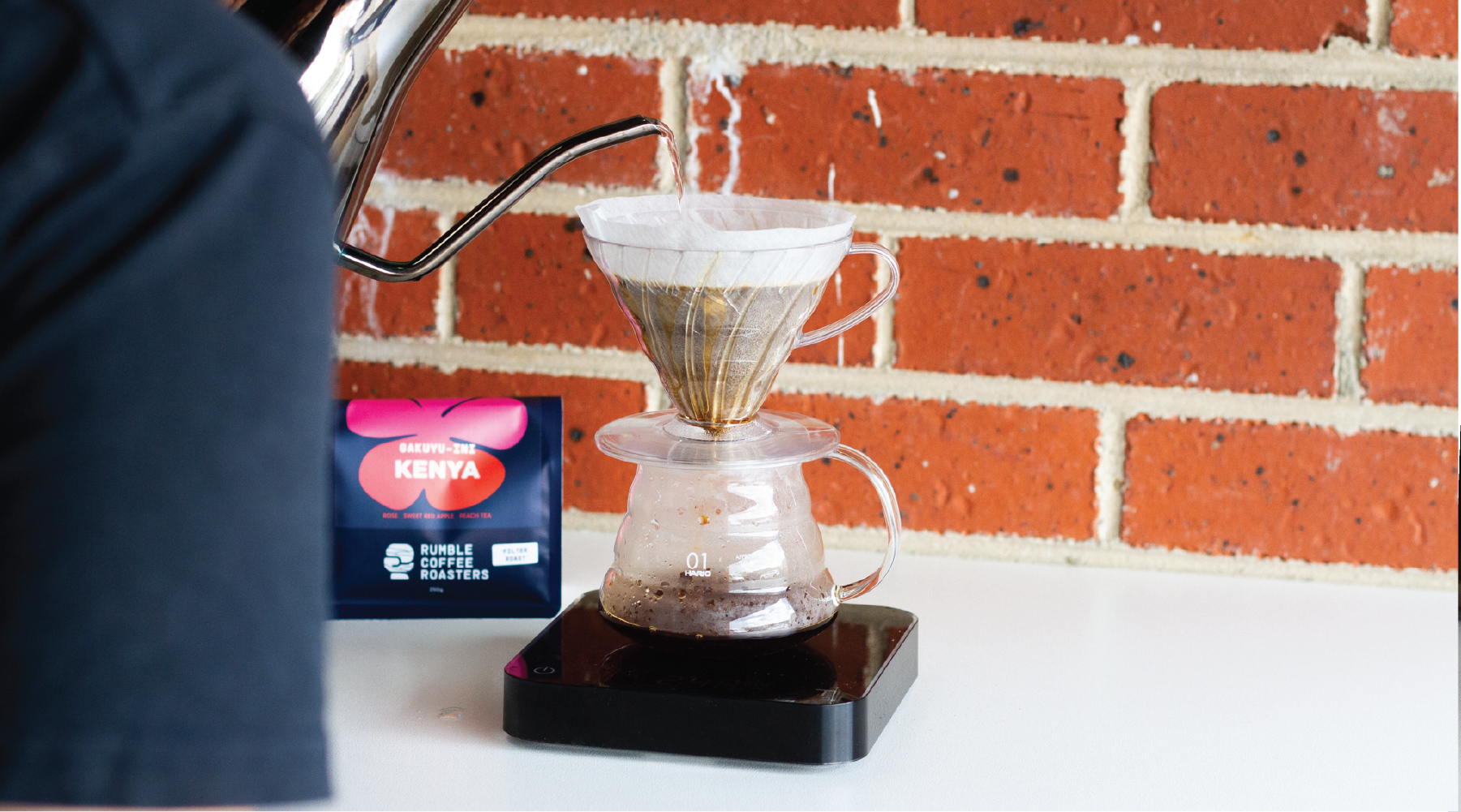
How to Make Filter Coffee at Home
You don’t need a barista setup or expensive coffee machine. With fresh coffee beans, clean water, and attention to grind size, you can brew café-quality filter coffee right at home.
You’ll need:
-
Freshly roasted coffee (try our Sweet Science Filter Blend)
-
Burr grinder
-
Filter brewer (V60, Aeropress, Kalita, or batch brewer)
-
Filter paper
-
Digital scales
-
Hot water (about 94°C — the ideal water temperature)
Method:
-
Grind 15g of coffee to a medium grind size (similar to coarse sand).
-
Add the ground coffee to your brewer and gently shake to level the coffee bed.
-
Pour 250g of hot water slowly in circles over the grounds, keeping them evenly saturated.
-
Let the water drip through completely (around 2½–3 minutes).
-
Swirl and serve.
👉 Tip: Always use filtered clean water for brewing coffee — tap water with too much mineral content can muddy the flavour.
Common Filter Coffee Mistakes
-
Over-extraction: Too fine a grind or too hot water → bitter, papery taste.
-
Under-extraction: Too coarse a grind or too little water → weak or sour flavour.
-
Old coffee beans: Stale beans make flat, lifeless brewed coffee.
-
Dirty filters or brewers: Always rinse your filter papers and clean your brewer to avoid papery or musty flavours.
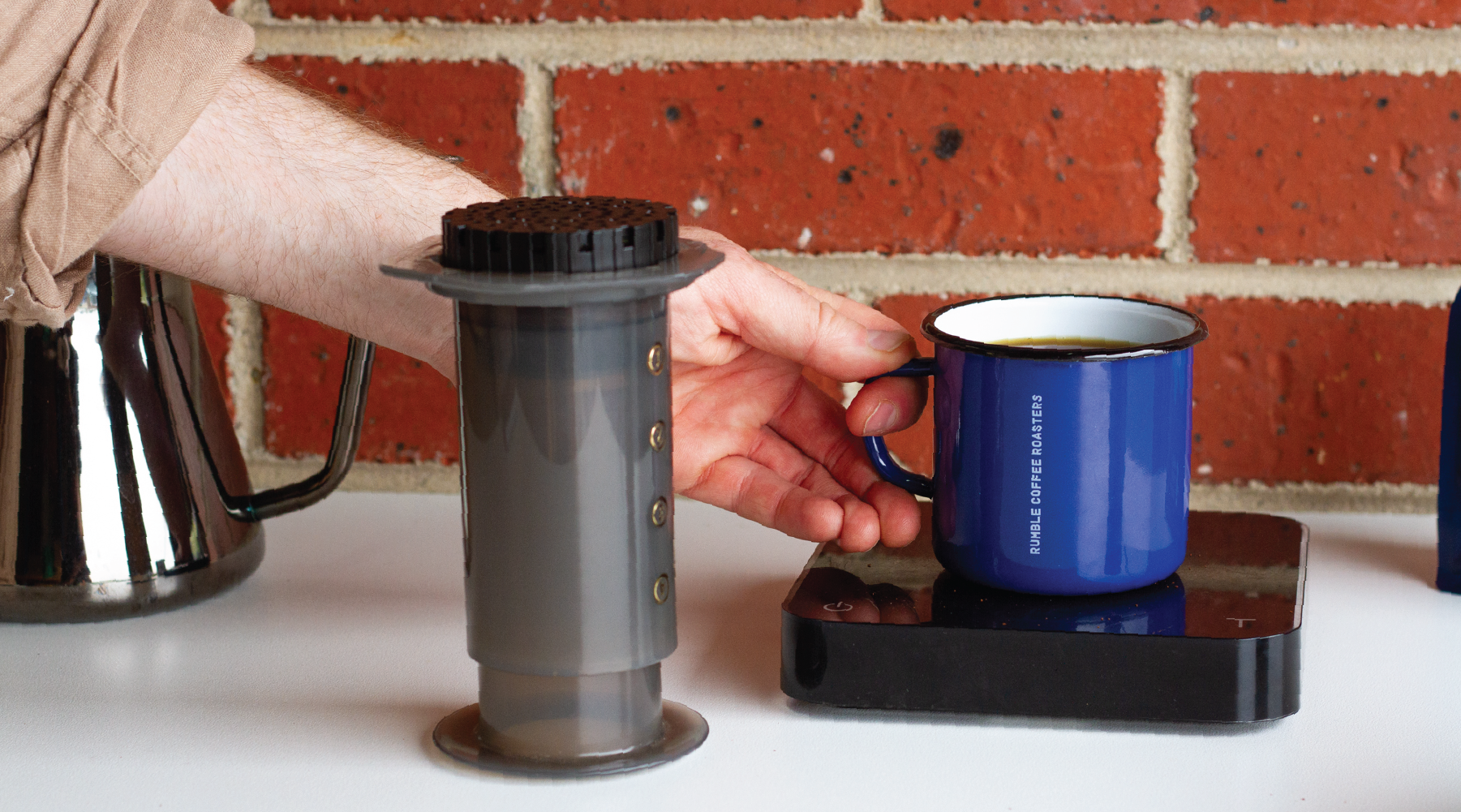
Filter Coffee vs Espresso
|
Brew Method |
Brewing Process |
Texture |
Flavour |
Ideal For |
|---|---|---|---|---|
|
Filter Coffee (Filtered Coffee) |
Percolation brewing using gravity |
Light & clean |
Bright, nuanced, and origin-driven |
Everyday brewing & tasting |
|
Espresso |
Pressure-based brewing |
Thick & intense |
Bold, concentrated |
Milk coffees & espresso drinks |
In short: Filter coffee lets you taste the bean; espresso emphasises strength and texture.
Frequently Asked Questions
1. Is filter coffee the same as filtered coffee?
Yes — they’re two names for the same thing. Filtered coffee is a broader term often used by casual drinkers, while filter coffee is used more by specialty coffee roasters and baristas.
2. What is a filter roast coffee?
A filter roast is roasted lighter to highlight flavour clarity and natural sweetness when brewed slowly with hot water and a filter. It’s not designed for espresso — instead, it’s ideal for pour-over, drip, and batch brew methods.
3. Is filtered coffee healthier than espresso?
Yes. To a degree. The paper filter removes most oils and compounds that raise cholesterol. Coffee itself (black with no additives) is healthy — it’s rich in polyphenols and associated with lower all-cause mortality. Filtered coffee also tends to have slightly less caffeine per cup and is smoother on the palate.
4. What’s the best grind size for filter coffee?
Use a medium grind (like sea salt). Too fine and it’ll taste bitter; too coarse and it’ll be weak. Adjust your brewing process based on the brewing device and water temperature.
5. Can I add milk or sugar to filter coffee?
Of course — it’s your cup. Traditional filter coffee often includes hot milk or sugar, but we recommend trying it black first to appreciate the flavour and clarity of the beans. If you are always adding milk, then try using an espresso blend and see how you like that. Oat milk also works well, but soy has a tendency to curdle. Hot milk isn't needed either as the filter coffee itself is hot enough.
6. Why does my filter coffee taste papery or dull?
That usually means you haven’t rinsed your filter papers before brewing. Always rinse them with hot water to remove any papery taste before adding ground coffee powder.
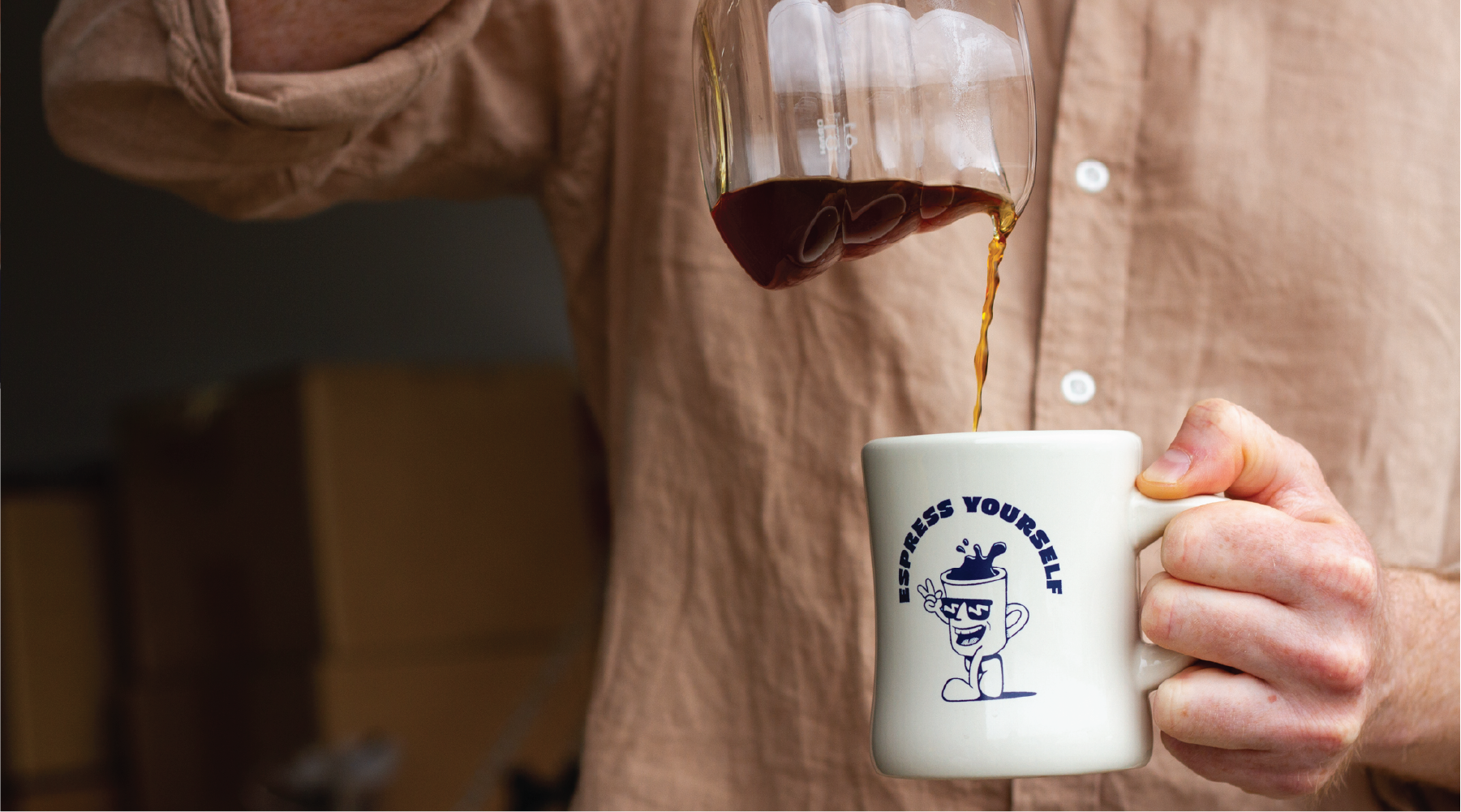
Final Thoughts
Filter coffee — or filtered coffee — is the simplest way to experience the true character of your coffee beans. The slower brewing method reveals sweetness, balance, and clarity that espresso can’t match.
Whether you use a pour-over, batch brewer, or drip coffee machine, the secret is the same: fresh filter roast, consistent grind size, and clean water.
At Rumble Coffee Roasters, every batch is roasted with flavour, balance, and clarity in mind.
 All our filter coffees are roasted fresh to order and shipped fast across Australia — so your next cup of brewed coffee tastes its best.
All our filter coffees are roasted fresh to order and shipped fast across Australia — so your next cup of brewed coffee tastes its best.
👉 Start your filter journey today:Explore our range of filter coffee - roasted to bring out the very best in your filter coffee. From our Sweet Science Filter blend to a range of seasonal single-origin filter coffees that change throughout the year.


